There is no light deep in the rocky world of caves - but there is an abundance of animals specially adapted to the challenge of life in total darkness.
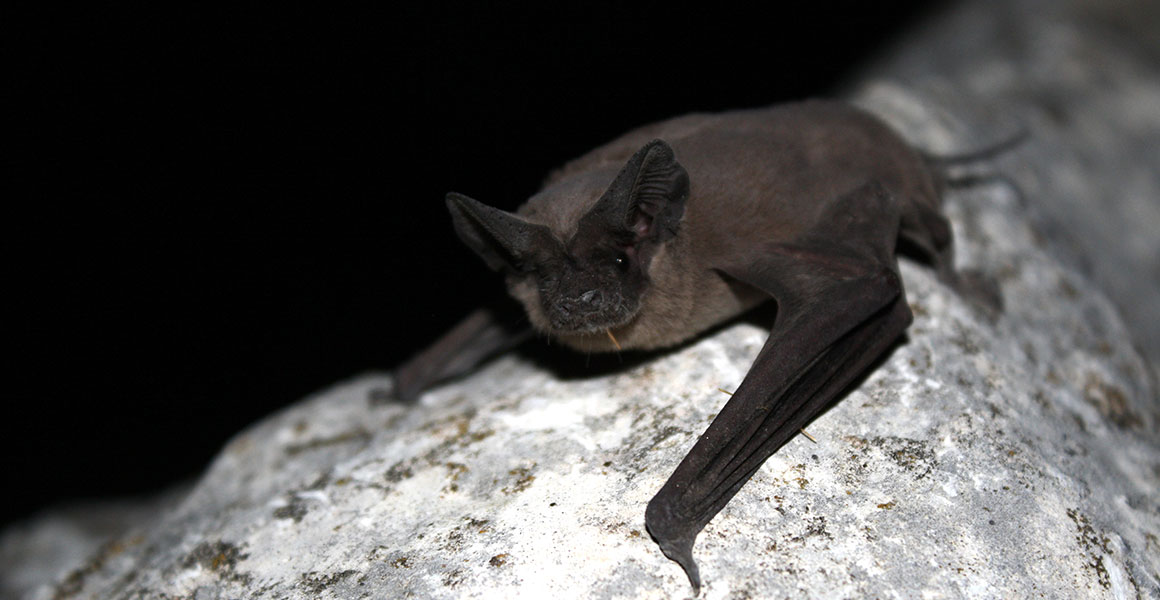
Mexican free-tailed bats (Tadarida brasiliensis) are one species known to take up residence in caves. The largest known colony of this species is thought to be found in Braken Cave in Texas, where there are an estimated 20 million bats. © U.S. Fish and Wildlife Service via Flickr (CC BY 2.0)
There are caves all over the planet, but only a few have been explored. These dark spaces are sheltered from the weather and provide a steady temperature, making them ideal homes for an enormous diversity of life.
Animals that are adapted to live in caves are known as troglofauna. Some - such as bats, bears and swiftlets - use caves on a temporary basis. Others reside there permanently, living out their entire life cycles in the dark - but many have evolved special abilities to help them survive in their food- and light-limited habitats.
A life with limited resources
In the depths of cave systems is a world with no light and therefore no photosynthesis.
Our scientist Professor Geoff Boxshall says, 'In a few caves there is some bacterial production. In some flooded systems you might get bacteria using sulphur as an energy source, instead of light. But almost all food in caves is carried in from the outside.'
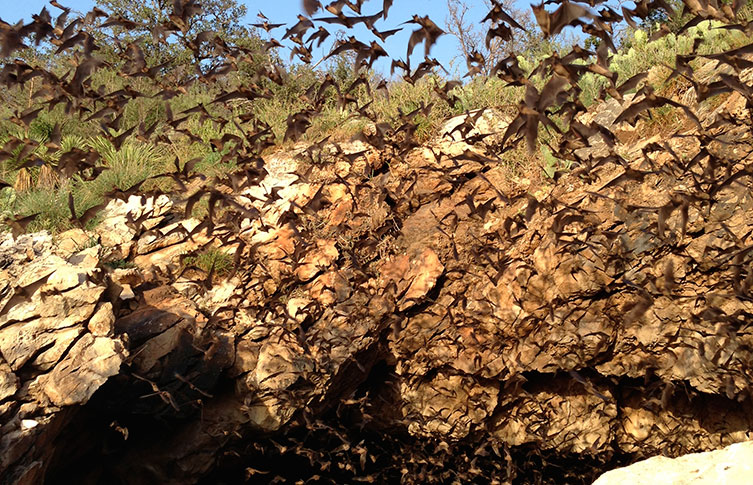
Hundreds of bats emerge from a cave © U.S. Fish and Wildlife Service via Flickr (CC BY 2.0)
Some animals use caves as part-time homes. Bats and swiftlets use them to roost during the day and night respectively. In some caves there can be as many as 20 million bats in residence. By foraging outside of caves for insects and fruits, part-time cave residents provide for those that never leave.
'Bat faeces are a massively important food source,' explains Geoff.
Animals that feed on bat guano and other dead organic material are known as detritivores. In cave systems, these can include cockroaches, mites, woodlice and springtails.
Like other habitats, caves have their own food chain. The detritivores rely on bat faeces and are consumed by the next level of predators, such as spiders and pseudoscorpions. Centipedes and cave boas are often the top predators in these underground environments. The snakes are specially adapted to be able to catch swiftlet and bats as they fly past.
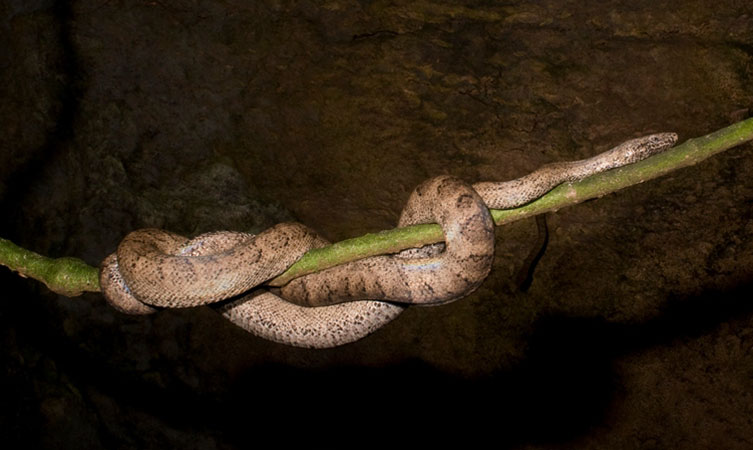
The Puerto Rican boa (Chilabothrus inornatus) hangs from the roof of caves and catches bats as they fly past on their way in and out of the cave © Jan Paul Zegarra via U.S. Fish and Wildife Service Flickr (CC BY 2.0)
Waterlogged worlds
More than 94% of Earth's unfrozen water is stored underground. Anchialine caves are coastal caves flooded by saltwater percolating through the surrounding limestone or volcanic rock.
These marine environments have the characteristics of other cave types, including enclosed spaces, darkness and limited food resources. They too are inhabited by specialised troglomorphic animals.
First found in a Bahamian cave in 1981, remipedes are aquatic crustaceans in the class Remipedia. They are colourless and blind, and can grow to around 4.5 centimetres in length.
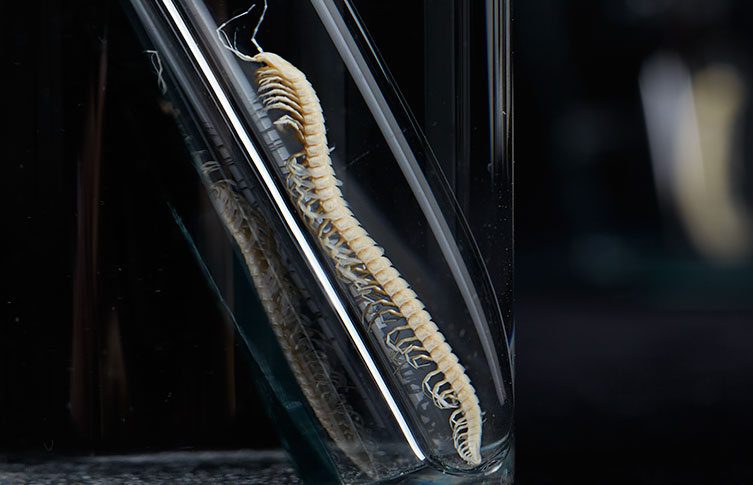
Remipedes are slow and blind. Their venom may help them to quickly overpower faster and more agile prey.
Although remipedes have long, segmented bodies that look like centipedes, these arthropods are very distantly related. Remipedes are the only known venomous crustacean, producing a venom that is closer to that of vipers than of centipedes.
These blind crustaceans use chemosensory hairs (organs that can detect particular chemical molecules) on their antennae to detect their prey, including other crustaceans such as isopods, copepods and shrimps. But caves are a food-scarce environment and remipedes are able to store energy as globules of fat to see them through the lean times.
Not all animals need eyes
The remipede isn't the only blind, colourless, cave-dwelling animal. There is a huge diversity of such creatures, but some of the best understood are the cavefishes.
Geoff says, 'A lot of major cave systems worldwide have blind cavefish. It seems obvious that if there is no light then eyes are of little use and evolution is a relentless mechanism for eliminating unused structures.
'However, what is really interesting is there aren't any blind fish in the deep sea. No sunlight penetrates below 1,000 metres, even in the clearest water - so why are deep sea fish still expending resources on making eyes?
'It's because there is a lot of light in the deep sea - and it is bioluminescence.'
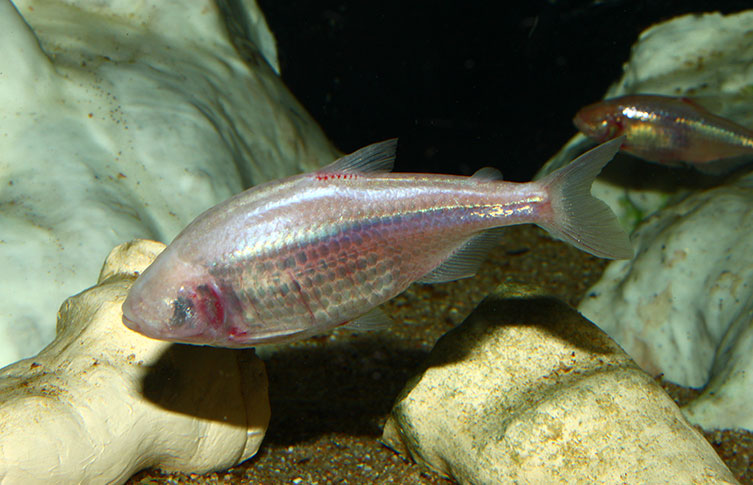
The Mexican tetra has diverged genetically into two forms - one with eyes and one without © H. Zell via Wikimedia Commons (CC BY-SA 3.0)
In the light above ground, vision is useful for spotting predators. But in the lightless world of caves, eyes become of little use. Many cave animals have lost their eyes through evolution. Instead they use alternate senses to help them navigate in the dark. This explains why cavefish can swim around actively and find food, and don't spend their lives crashing into walls.
The Mexican tetra (Astyanax mexicanus) has diverged genetically into two forms. The form that lives in caves has lost pigmentation and eyes, but the populations above ground have retained both. In the cave-dwelling subspecies, adults have sunken cysts under the skin in place of eyes.
Cavefish are exceptionally sensitive to pressure and vibrations, and have a remarkable sense of smell to help guide them. They also never sleep - deep in caves there is no day and night - so they're constantly swimming.
The elephants that dug a cave
There are several types of cave and most are created by water - fresh, saline or both - dissolving or eroding the surrounding rock. But there are less typical formation processes, too.
Elephants may be one of the animals least expected to spend time in caves. But a select group in Africa are well known for their unique habits.
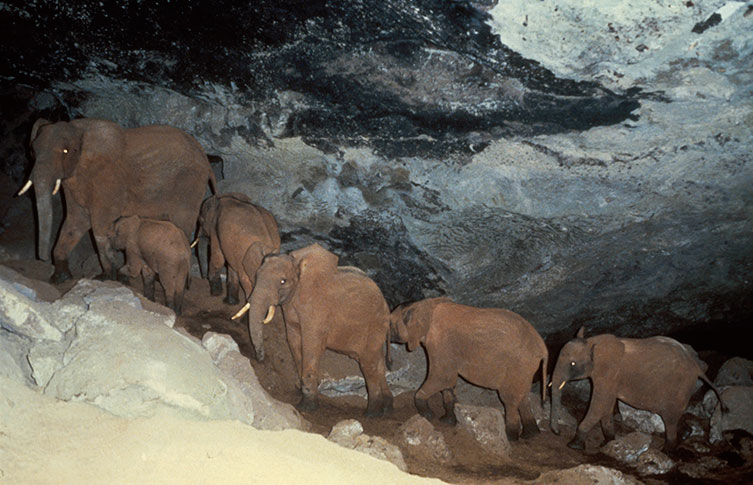
Elephants climbing over a roof-fall in Kitum Cave © CMS Ambassador Ian Redmond via UNEP Flickr (CC BY-NC-SA 2.0)
Mount Elgon is a now-dormant volcano on the border of Kenya and Uganda. On the mountain's side is Kitum Cave, which is thought to have been partly dug out by some very persistent elephants. The cave extends around 160 metres from the entrance through rock that contains a small amount of sodium, known as Glauber's salt.
Herbivores get little salt from the plants in their diets, so they seek out sodium in other forms, such as from salt-bearing rock. Elephants are notoriously loyal to foraging grounds, passing knowledge of them through the generations.
The Kitum Cave elephants have been observed using their tusks to chip away at the sodium-containing rocks of the cave walls to then consume the fragments. Over multiple generations these animals have made a considerable impact on the structure.
Though the elephants aren't permanent residents of the cave, they pass through regularly to maintain their mineral intake.
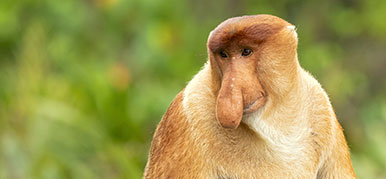
What on Earth?
Just how weird can the natural world be?
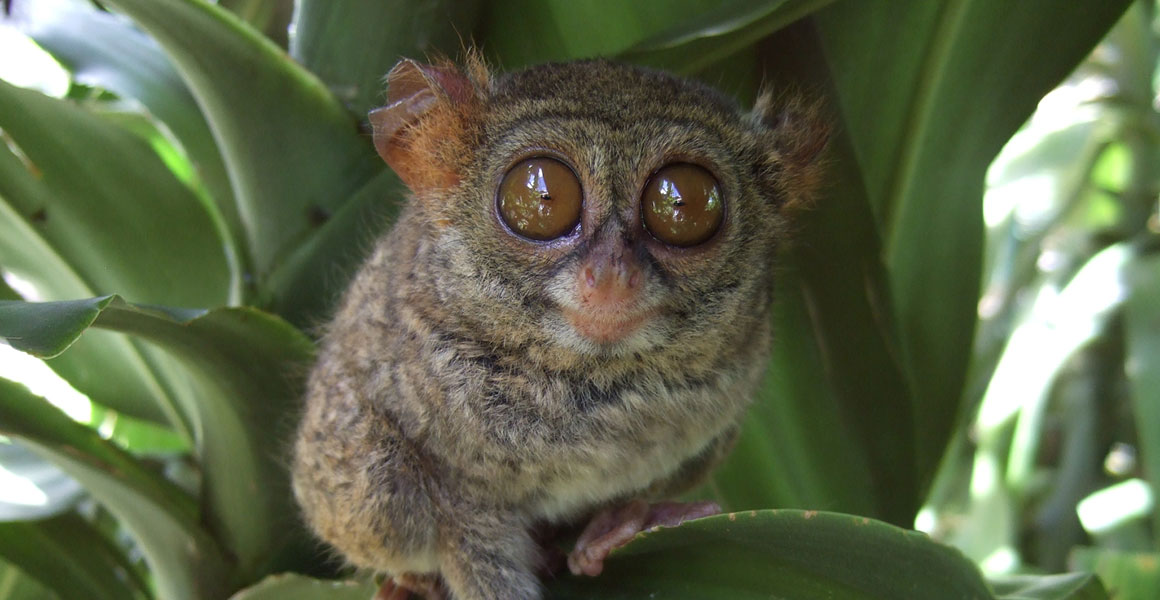

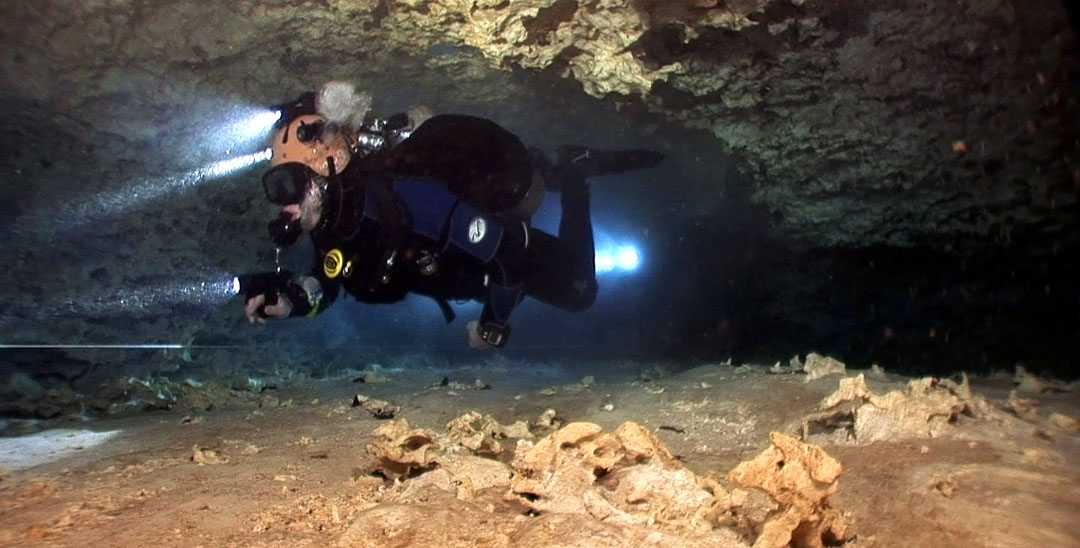
Don't miss a thing
Receive email updates about our news, science, exhibitions, events, products, services and fundraising activities. We may occasionally include third-party content from our corporate partners and other museums. We will not share your personal details with these third parties. You must be over the age of 13. Privacy notice.
Follow us on social media